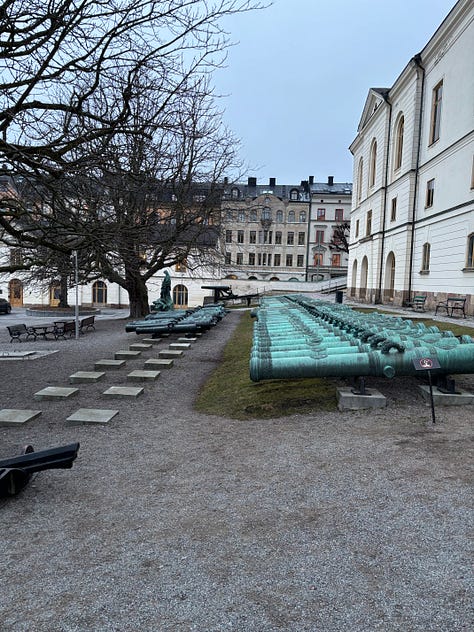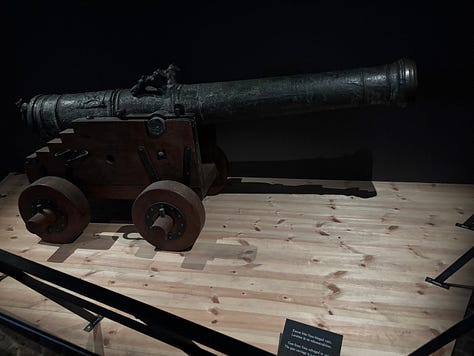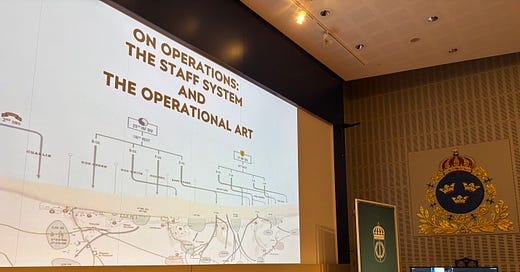Earlier this week I was privileged to travel to Stockholm and speak about On Operations. The audience was the students of their Joint Operations Course at the Swedish Defence University. The University uses both On Tactics and On Operations, the former for their cadets and the latter for their early to mid-career officers.
This was the first time I’ve been asked to present the book in spoken form and so developed a presentation just for this event, which I think went well. The students and staff asked excellent questions both during the talk and when I sat down for a discussion with the Land Warfare Course staff the day prior. As Sweden simultaneously undergoes a military expansion and begins integrating with NATO as a member state, the development of modern staffs and the integration of US-dominated NATO doctrine is at the top of their minds.
In this, I counseled caution. I did so for two major reasons: first, U.S. military doctrine built around the three levels of war has been an abject failure in the acid test of war. The U.S. is unable to bridge the gap between tactics and strategy in any meaningful way, and it is now clear that adoption of the operational level in the late 20th century, which was supposed to link the two, has instead proven to be a barrier. (This comes as no surprise to anyone who has read the book.)
Secondly, and this will likely be an additional theme of any future edition of On Operations should there be one, the general staff system in use by every major military is reaching the end of its life cycle. Indeed, it probably should have died already but its natural life has been extended by pushing ever more staff officers, computers, meetings, boards, and working groups into the system to try and deal with the increasing amount of information the staff must process. It has worked so far, but is not likely to work in the future especially as large, concentrated staffs can be targeted by adversaries through an increasing amount of emergent capabilities. Dr. Alex Kalloniatis, an Australian defense analyst, is the first to have identified this problem. Expect to see more on this from me and probably others in the future.
In other words, other countries should not adopt U.S. doctrine and organizations uncritically. They offer lessons both good and bad, and it is up to other militaries to take what will work for them and reject what won’t.
Of course, I can’t travel without seeing the sights and especially cannon. And Stockholm had plenty, including a piece from 1645 at their excellent Army Museum. It’s definitely the oldest cannon I’ve personally seen. I also couldn’t skip the famous Vassa Museum, built around the wreck of the Vassa which went down in 1628 and was not found until 1961. If you’re ever in Stockholm, don’t miss it.
Below are some pictures from the Army Museum, the Vasa Museum, and the Viking Museum, all in Stockholm.













I would love to have been there!
We are in full agreement here.